This week is Clean Your Closet Week – a perfect time to go through everything in your closet and other clothing storage areas, let go of things that you no longer want, like, or need, and reorganize what’s left so you can actually find what you need when you’re getting dressed. Keep reading to tap into 10 simple strategies to make your life easier with an organized closet.
Employing these strategies will require some up-front time, and the positive effects will serve you well for the rest of your life.
Please read through all the strategies before you begin.
1. Empty and clean your closet.
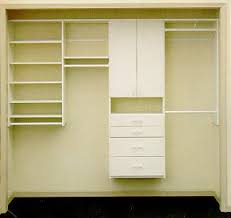 Empty your entire closet of all contents, including clothing, shoes, accessories, etc. As you remove each item, sort everything into piles by category, such as pants, dresses, tops, outerwear, accessories, shoes, undergarments, etc.
Empty your entire closet of all contents, including clothing, shoes, accessories, etc. As you remove each item, sort everything into piles by category, such as pants, dresses, tops, outerwear, accessories, shoes, undergarments, etc.
Once your closet is completely empty, give it a thorough cleaning. Wipe down the shelves, remove cobwebs, clean the floor or vacuum the carpet. Clean any scuff marks or dirt off the walls.
2. Decide what to keep and what to give away.
Make decisions for every item in each category before moving on to the next category. Looking at things when they’re all grouped together by category will make it easier to decide what to keep and what to give away or sell. Do you have several items that are similar? If so, which one do you like best? Which ones fit best and are in the best condition? Having less of the same or similar items will help you to simplify your life.
 Make a commitment to only keep things you love that are in good condition and that you can wear. If you love something but it doesn’t fit, needs repair, or is uncomfortable to wear (clothes that make you itch, shoes that hurt your feet, etc.), you probably won’t wear it. Time to let it go!
Make a commitment to only keep things you love that are in good condition and that you can wear. If you love something but it doesn’t fit, needs repair, or is uncomfortable to wear (clothes that make you itch, shoes that hurt your feet, etc.), you probably won’t wear it. Time to let it go!
If you want to keep something that needs attention (mending, altering, stain removal, dry cleaning, etc.), commit to doing whatever is needed so you can wear it. If you’re not willing to invest the time or money to do whatever is needed to get it in wearable condition, it’s time to let it go.
If you need to lose weight in order for something to fit, do you have a weight loss plan in place that you’re committed to following? Unless you’re pregnant or are following a committed plan to lose weight, you’ll probably never wear it again.
Occasionally, you may need to fine-tune decisions later on, after you’ve sorted through all the clothes in each category. For example, if you have a blouse or shirt you’ve decided to keep, but it doesn’t go with any of your skirts or pants, what are the chances you’ll ever wear it? Either commit to purchasing a coordinating piece to go with it, or let it go unless you plan to wear it by itself. I once had a pair of green shoes that I loved, but they didn’t go with anything in my wardrobe. After keeping the shoes for several years and realizing I would never wear them, I donated them to charity.
3. Design your ideal closet and auxiliary storage space.
Assess your storage needs and determine if you will purchase any closet organizing supplies such as racks, bins, shelving, or drawers. If you need ideas for maximizing use of your space while keeping the contents of your closet more organized, do a Google search for “closet organizers” and you will find lots of pictures and ideas about closet storage solutions available to you.
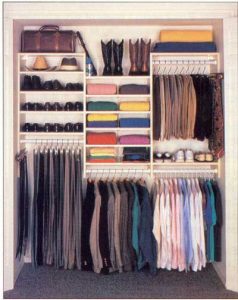 If you have the time and money to have a custom-designed closet built for you, go for it. If not, get creative and work with what you have. Take note of your closet’s best features, such as vertical storage space or built-in shelving. Use these to your advantage.
If you have the time and money to have a custom-designed closet built for you, go for it. If not, get creative and work with what you have. Take note of your closet’s best features, such as vertical storage space or built-in shelving. Use these to your advantage.
If you have too many shelves and not enough hanging space, remove a few shelves and create double (upper and lower) hanging space. Kits are available for do-it-yourself closet organizers like the one pictured to the right.
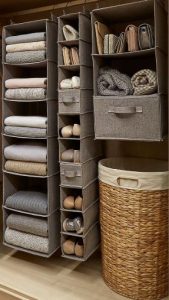 If you have a lot of hanging space and not enough shelf space, get creative by using hanging organizers (pictured left) to store things like t-shirts, sweaters or shoes.
If you have a lot of hanging space and not enough shelf space, get creative by using hanging organizers (pictured left) to store things like t-shirts, sweaters or shoes.
If you have a lot of shelf space, you may benefit from purchasing some storage bins to help you organize things you store on the shelves.
 If your closet is too small, look for vertical storage space in your bedroom. You can purchase a stand-alone unit (chest of drawers or shelving)…or if you want to significantly expand your storage space, have built-in cabinets designed that use every inch of your vertical space, from floor to ceiling. The custom-built cabinets and drawers pictured to the right completely transformed this bedroom from a cluttered overstuffed space to one with plenty of hidden storage.
If your closet is too small, look for vertical storage space in your bedroom. You can purchase a stand-alone unit (chest of drawers or shelving)…or if you want to significantly expand your storage space, have built-in cabinets designed that use every inch of your vertical space, from floor to ceiling. The custom-built cabinets and drawers pictured to the right completely transformed this bedroom from a cluttered overstuffed space to one with plenty of hidden storage.
4. Store your clothes by category.
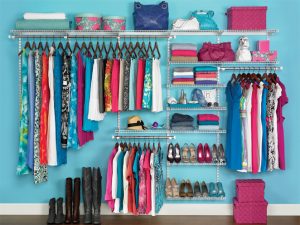 This may seem obvious, but it makes all the difference when you want to find something quickly.
This may seem obvious, but it makes all the difference when you want to find something quickly.
Keep like items with like items, such as short-sleeve and long-sleeve shirts, casual and formal dresses, skirts, casual and dress pants, sportswear, belts, scarves, ties and shoes.
If you want to take your organization one step further, you can store your clothing by color within each category.
5. Use uniform hangers.
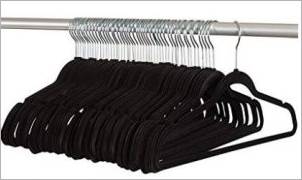 Nothing screams closet chaos quite like a collection of wire and plastic hangers alongside each another. Limit the visual clutter and give your closet a sleek, streamlined look by using matching hangers for your clothes, as demonstrated in the photo above.
Nothing screams closet chaos quite like a collection of wire and plastic hangers alongside each another. Limit the visual clutter and give your closet a sleek, streamlined look by using matching hangers for your clothes, as demonstrated in the photo above.
I prefer the sturdy velvet ultra-slim hangers over the thin plastic ones. The velvet hangers grip material so your clothing doesn’t slide off and fall to the floor. This type of hanger also takes up less space in the closet than the plastic tubular ones. Although wooden hangers are very durable, they take up more space and can damage items like silk blouses.
6. Hang Accessories.
 Hang necklaces, belts, scarves and ties. Anything that can hang, can hang together on a hanger. All you need are circular shower curtain rings (pictured to the right) and you can quickly transform any hanger into accessory storage.
Hang necklaces, belts, scarves and ties. Anything that can hang, can hang together on a hanger. All you need are circular shower curtain rings (pictured to the right) and you can quickly transform any hanger into accessory storage.
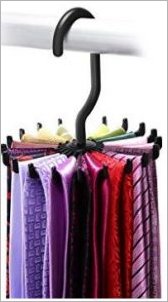 There are many kinds of jewelry holders available for storage of necklaces, earrings, bracelets, and more.
There are many kinds of jewelry holders available for storage of necklaces, earrings, bracelets, and more.
If you have lots of neck ties, you may want to invest in an inexpensive tie rack. Or you can roll ties and store them in drawer dividers in a drawer or on a shelf.
7. Fold and stack bulky clothes.
If you don’t have enough hanging or drawer space for things like jeans, bulky sweaters or sweatshirts, fold these and store them on shelves or in bins.
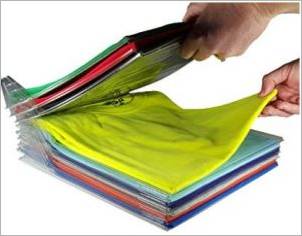 For thin items like t-shirts, check out the EZSTAX Closet Organizer and Shirt Folder. Watch this demo video to better understand how this organizing tool works. To accompany this, I recommend purchasing a shirt folding board that aids you in uniformly folding items you want to store flat. This demo video shows how you can fold clothing with ease, making perfect stacks for shelf storage. These simple tools enable you to easily see each item in a stack so you can find what you’re looking for.
For thin items like t-shirts, check out the EZSTAX Closet Organizer and Shirt Folder. Watch this demo video to better understand how this organizing tool works. To accompany this, I recommend purchasing a shirt folding board that aids you in uniformly folding items you want to store flat. This demo video shows how you can fold clothing with ease, making perfect stacks for shelf storage. These simple tools enable you to easily see each item in a stack so you can find what you’re looking for.
8. Roll t-shirts, pajamas, and undergarments and store in bins.
Items like cotton shirts, leggings, socks, and undergarments are thin and pliable, making them perfect for rolling and storing side-by-side for easy access.
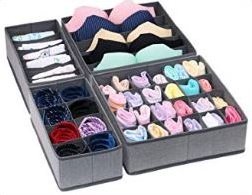 Simply fold the item in half and roll it into a tube. Then store side-by-side with other rolled items in shoe boxes, wire baskets, or clear bins.
Simply fold the item in half and roll it into a tube. Then store side-by-side with other rolled items in shoe boxes, wire baskets, or clear bins.
You may also want to purchase some inexpensive drawer organizers for clothes to help keep things in place in your drawer. To maximize space in the compartments and make everything easy to see, roll and store things like your socks, tights, underwear, and belts.
9. Maximize your vertical closet storage space.
Most closets have some unused vertical space. Consider creative ways you can use the walls, top shelves, doors, and even the space between the floor and the bottom your hanging clothes.
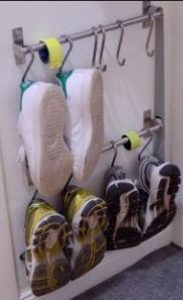 Hang an over-the-door shoe rack. Use extra wall space to install shelves that hold jewelry boxes or handbags.
Hang an over-the-door shoe rack. Use extra wall space to install shelves that hold jewelry boxes or handbags.
If you have lots of shoes, store your most frequently-used shoes on the inside of the closet door. You can achieve this by installing a simple towel bar and hanging your shoes on hooks. Check out the Ikea Kitchen Rail Grundtal Bar Decorative Organizer, which comes with five hooks.
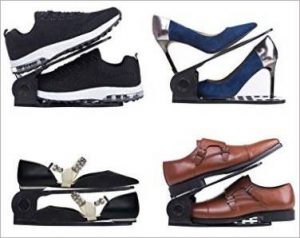 Another great space saver is the Shoe Slots Closet Space Saver, which doubles your storage space for shoes.
Another great space saver is the Shoe Slots Closet Space Saver, which doubles your storage space for shoes.
Bins and baskets offer a great way to use space on hard-to-reach shelves. Uses include less-wrinkly clothing and accessories such as tights, belts, gym clothes, hats, and handbags. 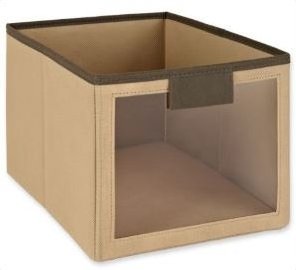 Label your storage bins or baskets with a description of the contents. This will make everything easier to find. I also like the ClosetMaid Fabric Bin with Window, which makes it easy for you to see what’s stored inside.
Label your storage bins or baskets with a description of the contents. This will make everything easier to find. I also like the ClosetMaid Fabric Bin with Window, which makes it easy for you to see what’s stored inside.
NOTE: Store the things you use the most in easy-to-reach places. If you are unable to reach things up high, keep a small step stool in your closet so you can access things stored on top shelves.
10. Take control over what goes into your closet.
Despite your best efforts, you may still end up with ill-fitting, outdated, or unloved clothes at the end of every year. Here’s how to prevent things from getting out of hand.
First, when you buy something, save the receipt and don’t cut the tags off until you’ve “slept” on it, tried it on again at home, and have asked yourself these questions:

- Does it fit well?
- Does it feel good on my body (in sitting and standing position)?
- Does the color and style look good on me?
- Do I like it?
- Do I have use for it? (consider activities you do)
- Does it convey my personality and the image I want to project?
- Do I have what I need to go with it?
- Was the price I paid worth the value I will receive if I keep it?
Asking yourself these questions after you purchase something will vastly reduce the number of items you purchase and never wear or use. If you don’t love it and feel good when you’re wearing it, take it back! Don’t settle for something that is just “okay” or buy something because it was a really good deal. Even something that’s free is not a “good deal” if it takes up your time, space and energy and does not serve a positive function in your life.
For every new item you bring into your closet, get rid of another item. This is a simple and easy way to ensure that your wardrobe never gets too large to manage.

Donate or sell? Most people benefit more from donating their clothing than trying to sell it. Unless you have a very expensive item that’s in high demand, I suggest you donate it to charity. I use ItsDeductible, a free online service that keeps track of all of my household donated items and places a value on them. It keeps track of all donations throughout the year, making it easy to calculate in-kind donation deductions at the end of the year. My family literally saves thousands of dollars in taxes each year because we donate so many household items and clothing to charity. Plus, we feel good about supporting a favorite local charity.
If your closet is overstuffed, consider swapping out your seasonal clothing twice a year. Creating extra space in your closet will make it easier to see what you have that is appropriate for the season. If you have a spare closet in a guest bedroom, you can store off-season clothing there. If not, store your off-season clothing in plastic storage containers with sturdy lids that completely seal and protect the contents. Sealed containers are especially important if you store your clothing in a damp basement, storage shed, or musty area of your home. At the end of the season — when it’s time to swap out your seasonal clothing — review the questions above to help you decide what to keep and what to get rid of.
Get Help!
Would you like some assistance organizing your home or your office? I’ve been an organizing consultant since 1995 and have been working virtually since 2003, combining my skills as a coach and a consultant. If you’d like to learn more about how working with a virtual consultant works, please check out these links:
- Virtual Organizing – Can you really help someone without being physically present?
- Benefits of Working with a Virtual Organizing Consultant/Coach
- Selecting the Right Virtual Organizing Consultant/Coach
My greatest joy is to give others the internal and external tools to organize their entire life–so their environment and lifestyle reflect their values and passions. If you’d like to explore the possibility of working with a seasoned virtual organizing consultant and certified coach, let’s schedule a no-cost Discovery Call today.
Additional Resources:
- Blog: Declutter Your Life
- Blog: Balance Your Life: Environment #8 – Physical
- FREE Assessment Tools: Assess Your Organizing Needs
- Guide: Staying Organized in the Age of Distractions
- Guide: Organize Your Home: A Road Map to Getting Your Home in Order in Just 30 Days!
- FREE Guide: Your Guide to Preparing for Disaster — FREE











Thanks so much for your great advice- I love it, love it, love it!!! Cleaning out my closet (or wardrobe as it’s known in Australia! ) was on my to do list tomorrow as it has been for years. You have just made a job I have been putting off for years now, not so much like a chore. I thought I was the only one who had to get rid of cobwebs – that made my day. LOL !! Also just wanted you to know I appreciate all your very informative posts – they are truly inspirational and have helped me a great deal. Keep up the great work Kathy and thanks once again.
Terri, thank you for your feedback about my blog. I am glad to know that the tips here will help you to reorganize your wardrobe tomorrow! I’d love to hear how it goes!
Your post was very helpful as always.
Thanks a bunch.